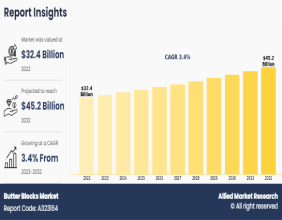Highlights:
- Volume discount is a pricing strategy where customers receive price reductions for purchasing large quantities.
- This practice benefits both buyers, through cost savings, and sellers, by encouraging bulk purchases and increasing sales.
- Volume discounts are commonly used across industries to enhance competitiveness, clear inventory, and build customer loyalty.
In the competitive world of business, pricing strategies can make or break a company's success. One of the most effective tools used by companies to drive sales and retain customers is the volume discount. This pricing mechanism, which offers reductions in price based on the purchase of large quantities, has become a staple across industries. Whether it's a retail giant offering discounts on bulk items or a manufacturing firm reducing prices for large-scale orders, volume discounts serve as a win-win strategy for both buyers and sellers.
Understanding Volume Discounts
At its core, a volume discount is a reduction in price that a buyer receives for purchasing items in large quantities. This practice is particularly common in industries where economies of scale allow companies to reduce production or delivery costs as order sizes increase. By passing these savings on to the customer, businesses incentivize larger orders, which in turn helps to streamline production processes and optimize supply chains.
The Mechanics Behind Volume Discounts
Volume discounts are often tiered, meaning that as the quantity of items purchased increases, the discount grows proportionally. For example, a company may offer a 5% discount for orders of 100 units, a 10% discount for 500 units, and a 15% discount for 1,000 units or more. This system not only motivates buyers to increase their purchase volume but also creates a sense of urgency to maximize cost savings.
Businesses offering these discounts often structure them in one of two ways:
- Cumulative Discounts: These are based on the total quantity purchased over a set period, rewarding repeat purchases and long-term partnerships.
- Non-Cumulative Discounts: These apply only to single large transactions, encouraging buyers to place bigger orders in one go.
Benefits for Buyers and Sellers
Volume discounts provide significant benefits to both buyers and sellers, making them a vital component of many pricing strategies.
- For Buyers: The primary advantage is cost savings. By purchasing in bulk, buyers can reduce the per-unit cost of products, allowing them to stretch their budgets further. This is especially beneficial for businesses that rely on raw materials or goods to maintain operations, as lower input costs can lead to higher profit margins.
- For Sellers: Volume discounts help drive higher sales volumes, which in turn can improve cash flow and reduce inventory holding costs. They also help businesses lock in long-term contracts, fostering customer loyalty. Furthermore, offering these discounts allows sellers to remain competitive in the market, as buyers are often drawn to companies offering the best deals on large orders.
Industry Applications
Volume discounts are widely used across various industries, including retail, manufacturing, wholesale, and even the service sector. Retailers frequently offer bulk discounts to consumers, encouraging them to purchase more at once, reducing the frequency of shopping trips. Manufacturers, on the other hand, offer volume discounts to distributors or other businesses that purchase large quantities of raw materials, components, or finished goods.
For instance, in the software industry, companies may offer discounted rates on licenses when purchased in bulk, helping businesses equip their entire teams with necessary tools at a reduced cost. Similarly, logistics companies may offer volume discounts on shipping fees for businesses that regularly ship large quantities of goods.
Strategic Implications
From a strategic standpoint, volume discounts can serve as a tool for customer retention and competitive differentiation. In highly competitive markets, offering volume discounts can be a deciding factor for businesses choosing between suppliers. Additionally, this pricing strategy can help companies clear excess inventory, improve warehouse space efficiency, and stabilize production schedules by encouraging larger, predictable orders.
Moreover, businesses that offer volume discounts often experience stronger customer loyalty. Buyers who benefit from bulk purchases are more likely to return to the same supplier for future orders, fostering long-term relationships and repeat business.
Conclusion
Volume discounts are more than just a pricing tactic; they are a powerful tool that businesses can leverage to enhance competitiveness, boost sales, and build lasting customer relationships. By offering price reductions for large orders, companies not only attract buyers but also encourage them to purchase more, driving mutual benefits for both parties involved. As a strategic tool, volume discounts will continue to play a crucial role in helping businesses thrive in today's dynamic market landscape.




